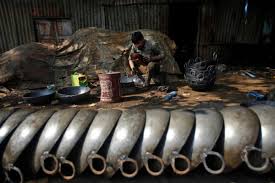Indian November factory growth fastest since late 2016 currency shock – PMI

India’s factory activity quickened in November at the fastest pace since just before the government’s surprise cash clampdown late last year, driven by a surge in new orders, a business survey found.
Responding to improving demand, manufacturers cranked up output for the fourth month in a row, and hired new workers at the fastest pace in five years.
That suggests a drag on the economy caused by the shock removal of higher-value currency bills from circulation in November 2016 and the roll-out of a goods and services tax (GST) this July has faded.
November’s Nikkei/IHS Markit Manufacturing Purchasing Managers’ Index rose to 52.6 from 50.3 in October, above all forecasts in a Reuters poll which had predicted a more modest rise to 51.0. Anything above 50 indicates growth.
The reading was the strongest in 13 months.
A new orders sub-index bounced back into expansionary territory to 54.2 in November from 49.9 the month before. Export orders improved slightly after contracting in the previous two months.
The findings add to evidence that a recovery in Asia’s third-largest economy is on track.
Data on Thursday showed growth rebounded to 6.3 percent annually in the quarter to September, from a three-year low of 5.7 percent in the previous period.
“India’s manufacturing economy advanced on its path to recovery as disruptions from the recent tax reform (GST) continues to diminish,” said Aashna Dodhia, economist at IHS Markit.
“Growth in output and new orders picked up to the fastest since October 2016, reportedly supported by reductions in GST rates and stronger underlying demand conditions.”
In order to help reduce the burden and confusion of the new nationwide tax on businesses, the government moved most goods which had attracted the highest rate to a band lower.
But cost pressures remained strong in November, and may push inflation to breach the Reserve Bank of India’s medium-term target of 4 percent.
“Underlying data indicated that the central bank is less likely to adopt an accommodative stance as input cost inflation intensified to the fastest since April,” said Dodhia.
The Reserve Bank of India is likely to keep interest rates steady at its policy meeting next week, with stronger inflation expectations leaving it little room to ease, a recent Reuters poll of economists showed.
Editing by Kim Coghill, rahul.karunakar@thomsonreuters.com
